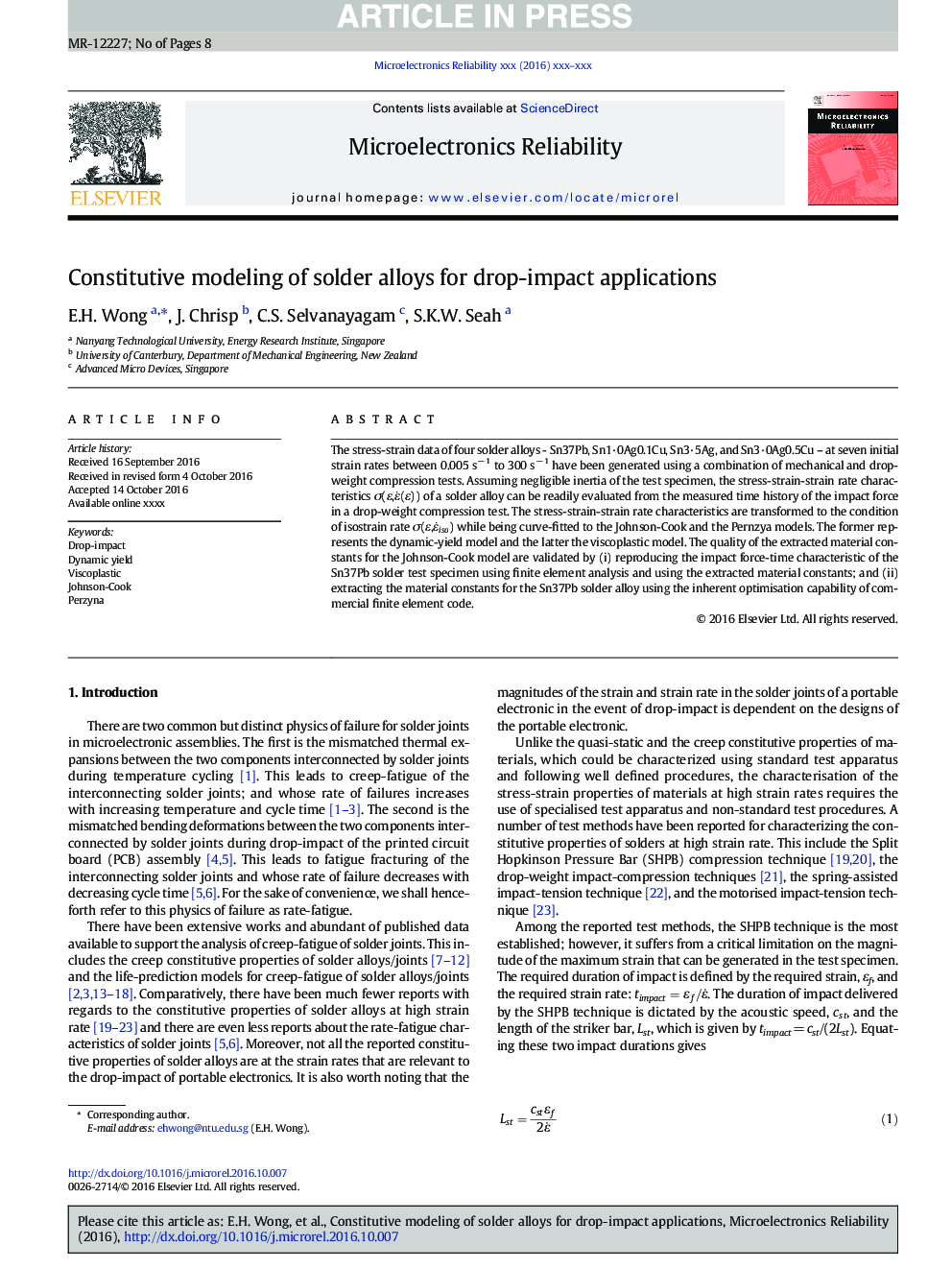| Article ID | Journal | Published Year | Pages | File Type |
|---|---|---|---|---|
| 4971788 | Microelectronics Reliability | 2016 | 8 Pages |
Abstract
The stress-strain data of four solder alloys - Sn37Pb, Sn1·0Ag0.1Cu, Sn3·5Ag, and Sn3·0Ag0.5Cu - at seven initial strain rates between 0.005 sâ 1 to 300 sâ 1 have been generated using a combination of mechanical and drop-weight compression tests. Assuming negligible inertia of the test specimen, the stress-strain-strain rate characteristics Ï(ε,εÌ(ε)) of a solder alloy can be readily evaluated from the measured time history of the impact force in a drop-weight compression test. The stress-strain-strain rate characteristics are transformed to the condition of isostrain rate Ï(ε,εÌiso) while being curve-fitted to the Johnson-Cook and the Pernzya models. The former represents the dynamic-yield model and the latter the viscoplastic model. The quality of the extracted material constants for the Johnson-Cook model are validated by (i) reproducing the impact force-time characteristic of the Sn37Pb solder test specimen using finite element analysis and using the extracted material constants; and (ii) extracting the material constants for the Sn37Pb solder alloy using the inherent optimisation capability of commercial finite element code.
Keywords
Related Topics
Physical Sciences and Engineering
Computer Science
Hardware and Architecture
Authors
E.H. Wong, J. Chrisp, C.S. Selvanayagam, S.K.W. Seah,
